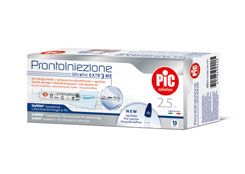
Needlestick injuries: more than 3 million exposures
Based on calculations by the World Health Organization, around 3 million health workers out of 35 million, almost 10%, are exposed each year to the risk of contracting infections from infected blood caused by needlestick injuries. The fact is, a lot of workplaces and other environments deal with needles: from prisons to tattoo artists. What are the dangers? AIDS and hepatitis.
Needles are everywhere in day-to-day life, especially in workplaces linked to public health and support services, but that's not all. Needlestick injuries and contact with blood expose people to the potentially severe risks linked to pathogenic germs that can cause infection and serious illness. Needlestick injuries, in other words, are a type of injury that can't be ignored, and it's important to know the effects and possible risks. It's exactly because the most common cause is being pricked by a syringe that these accidents are called needlestick injuries.
Needlestick injuries, 3 million people at risk
The World Health Organization talks about 3 million out of 35 million, almost 10%. That's how many workers in the health sector are exposed to the risk of contracting infections from the pathogenic germs found in blood due to needlestick injuries.
Needlestick injuries, 360 degree awareness
The fact is that it's not only health workers who are at risk, but also, for example, street cleaners in public places who can come into contact with syringes that have been used by drug addicts. The same principle exists for people who work in prisons or in the body piercing or body art sectors, where needles are a technique for cutting into the skin. Other categories exposed to possible infection by needlestick injury are social workers, funeral services staff and waste disposal personnel.
Red alert for HIV and hepatitis: the dangers of needles post-injection
A needlestick injury, if caused by a syringe, can transmit pathogenic agents found in blood via blood contact to people who've been "pricked". There are many conditions that can be transmitted by blood: from viruses, bacteria and fungal infections to other microorganisms. The most dangerous diseases however are AIDS and the hepatitis B and C viruses. The European agency for safety in the workplace calculated that the probability of infection after exposure to infected blood is 30% for hepatitis B, 10% for hepatitis A and 0.3% for AIDS.
Gloves and vaccines to guard against needlestick injuries
To eliminate the risk of transmitting viruses by accidental needlestick injuries in the health care environment - and not only there - measures are taken to reduce the danger, like using syringes with retractable needles and gloves.









